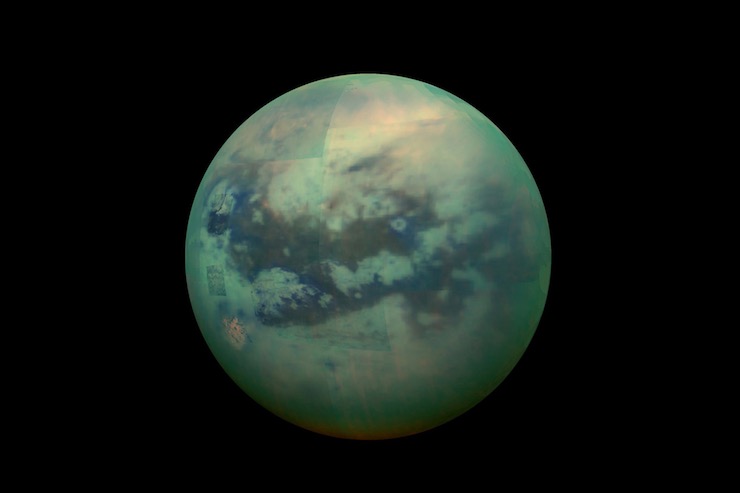NASA to Send a Drone to Saturn’s Moon, Titan

Ever since the race to space began in the mid 1950’s the world has been fascinated with learning about what lays outside of our atmosphere. Since then, NASA has spent millions of dollars annually in space research, close to $601.31 billion since NASA’s inception. After decades of study there is a lot that has been learned about the cosmos, but what we have yet to uncover is immense in comparison. Right now NASA is in the beginning stages of planning a new space mission to send a drone to Saturn’s moon, Titan.
Titan is the largest of Saturn’s 62 moons. It is often described as an earth-like planet moon. It is 50% larger than the Earth’s moon and is the second largest moon within our solar system. Because of it’s dense atmosphere, very little was known about Titan’s surface until a mission that took place in 2004. What was discovered is that the surface of Titan has characteristics similar to Earth with wind and rain induced dunes, rivers, lakes, and mountains. In 2034 NASA plans to send a drone named “Dragonfly” to the surface of Titan to fill in a lot of informational gaps.
Thomas Zurbuchen is an associate administrator at NASA working on the Dragonfly project. He said, “Titan is unlike any other place in the solar system, and Dragonfly is like no other mission. It’s remarkable to think of this rotorcraft flying miles and miles across the organic sand dunes of Saturn’s largest moon, exploring the processes that shape this extraordinary environment. Dragonfly will visit a world filled with a wide variety of organic compounds, which are the building blocks of life and could teach us about the origin of life itself.” This will be the second time NASA has landed a vessel on Titan. This time they hope to collect samples, photographs, measurements, and search for signs of microbial life.
Elizabeth Turtle is the lead researcher for the Dragonfly mission. She described the sand dune region on which they plan to land the drone as, “the largest Zen gardens in the Solar System wrapped around almost the entire equatorial region.” Once landed the Dragonfly, which is about the same size as the Mars-rover, will stay on Titan’s surface for 2 years. Every 16 days the drone is set to autonomously fly to a new location. At each location the Dragonfly will be collecting critical data to be analyzed by the team back on earth.
All the photographs and measurements taken by the craft will be sent through a transmission back to Earth. However, any actual samples collected will have to wait for further analysis at the end of the 2 year period. Jim Bridenstine, the NASA Administrator, said in anticipation of this mission, “With the Dragonfly mission, NASA will once again do what no one else can do. Visiting this mysterious ocean world could revolutionize what we know about life in the universe. This cutting-edge mission would have been unthinkable even just a few years ago, but we’re now ready for Dragonfly’s amazing flight.”
|